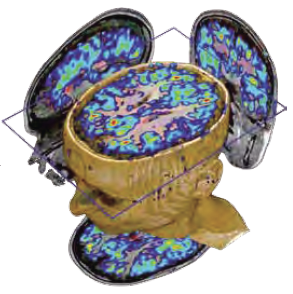 People who experience chronic low back pain may struggle to communicate changes in their pain, thus challenging health care providers. Harvard-affiliate Brigham and Women’s Hospital (BWH) researchers have employed Arterial Spin Labeling (ASL), a new imaging technique, to look at the brain when it is feeling pain. ASL let investigators quantify blood flow to different regions of the brain, indicating neuron activity. Chronic back pain sufferers displayed increased brain activity when their back pain was temporarily worsened through specific exercises, but the activity was not seen when thermal pain was applied, nor in the control group who did not have chronic pain. “We are getting closer to describing, on an objective level, how the body and brain are reacting when a patient reports having more pain.
People who experience chronic low back pain may struggle to communicate changes in their pain, thus challenging health care providers. Harvard-affiliate Brigham and Women’s Hospital (BWH) researchers have employed Arterial Spin Labeling (ASL), a new imaging technique, to look at the brain when it is feeling pain. ASL let investigators quantify blood flow to different regions of the brain, indicating neuron activity. Chronic back pain sufferers displayed increased brain activity when their back pain was temporarily worsened through specific exercises, but the activity was not seen when thermal pain was applied, nor in the control group who did not have chronic pain. “We are getting closer to describing, on an objective level, how the body and brain are reacting when a patient reports having more pain.
This could lead to an understanding of a patient’s neurocircuitry and which could lead to therapies tailored to the individual,” said Ajay Wasan, MD, MSc, study lead from the Pain Management Center at BWH.
Visit the University of Michigan’s comprehensive page on arterial spin labeling (ASL) to learn more about the procedure.
Source: InSpine — The International Journal for Spine Care Professionals; Michael Janssen; November 1, 2011.







